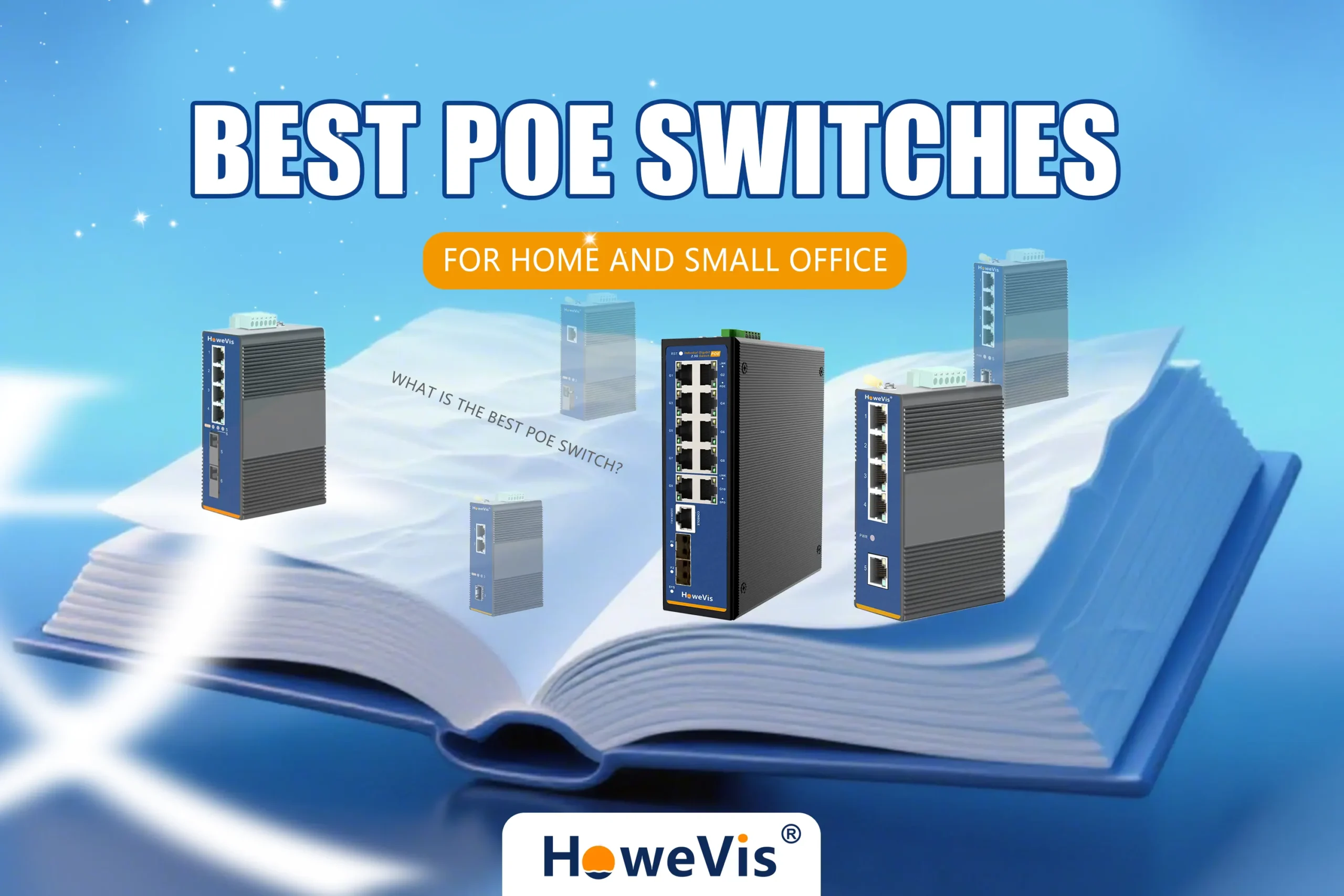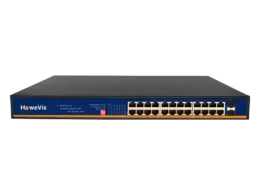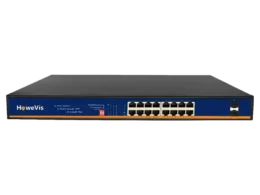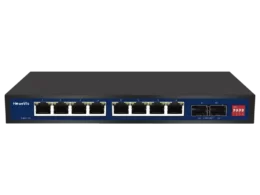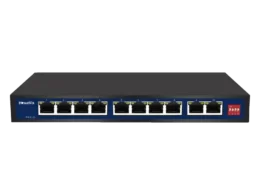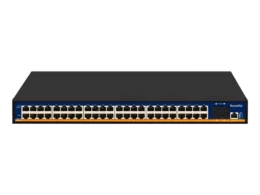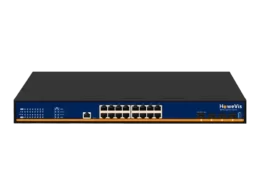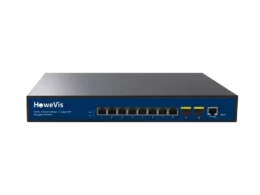Looking to build a reliable and efficient network for your home or small office? Choosing the best PoE switch is crucial for powering your IP cameras, Wi-Fi access points, and other smart devices seamlessly. Whether you’re setting up a robust surveillance system or optimizing your office network, a high-quality PoE switch not only simplifies cable management but also enhances performance.
In our latest guide, we break down the top PoE switches of 2025, featuring models perfect for any setup—from compact 8-port units for home use to scalable 16-port options for growing businesses. We compare key features like PoE budget, gigabit speeds, and management capabilities, helping you find the best value switch for your needs.
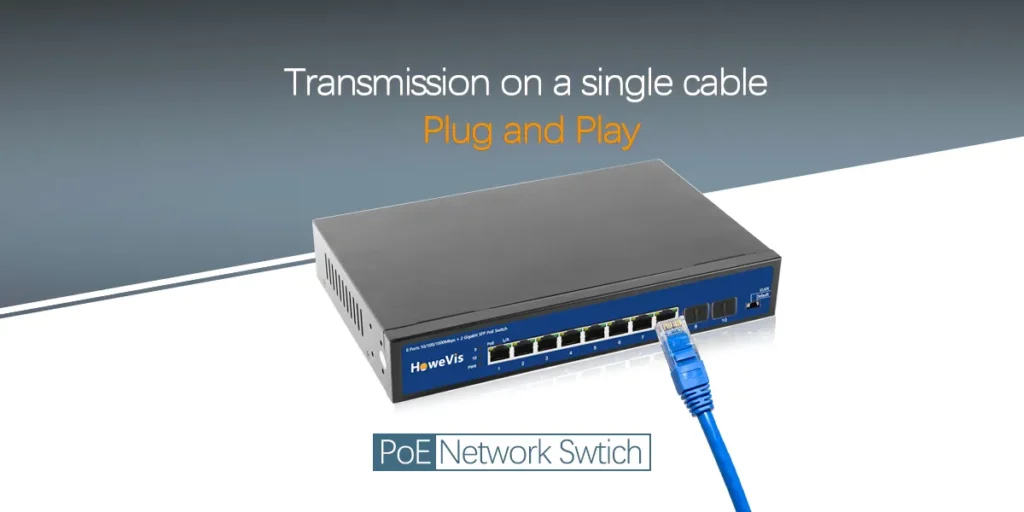
What is the best poe switch?
PoE (Power over Ethernet) delivers both data and electrical power over a single network cable—commonly Cat5e or Cat6—with a range up to 100m. It supports data speeds of 10/100/1000 Mbps and provides power from 15W up to 90W, making it ideal for devices like IP cameras, wireless access points, and VoIP phones.
Governed by IEEE standards like 802.3af (PoE) and 802.3at (PoE+), PoE ensures compatibility and safety between devices. This technology simplifies installations by reducing wiring and eliminating the need for nearby power outlets, leading to cleaner, more cost-effective setups—especially in remote or outdoor scenarios.
So, what makes a PoE switch better than a regular switch? A regular switch only handles data, while a PoE switch powers devices directly over Ethernet cables. This means fewer cables, lower installation costs, and greater flexibility for network layouts.
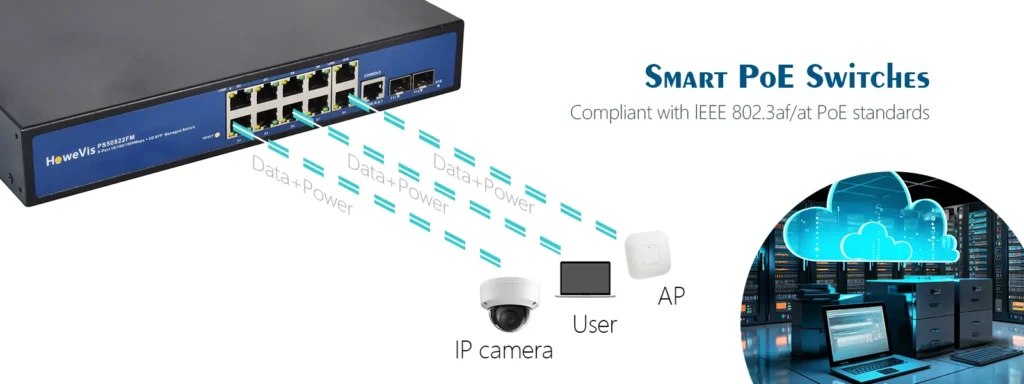
Key Factors to Choose the Best PoE Switch
Selecting the right PoE switch is crucial for building a reliable and efficient network. As an industry-leading manufacturer, HoweVision combines robust engineering and user-focused design to help you make an informed choice. Here are the key factors to consider:
PoE Standards (802.3af/at/bt) and Power Budget
Understanding PoE standards ensures compatibility and performance. The IEEE 802.3af (PoE) delivers up to 15.4W per port, ideal for basic IP phones and basic cameras. 802.3at (PoE+) supports up to 30W, perfect for high-performance APs and pan-tilt-zoom cameras. For demanding devices like access control systems, 802.3bt (PoE++) provides up to 90W. HoweVision switches clearly specify supported standards and total power budget, ensuring stable operation. Unsure how much power you need? Use our PoE Calculator Tool to find out.
Number and Speed of Ports
Your choice of port configuration directly impacts scalability. For most home offices, an 8-port gigabit switch offers ample connectivity. Larger offices may require 16-port or 24-port models. HoweVision offers a full range of gigabit PoE switches, ensuring every device—from security cameras to NAS storage—operates at optimal speed. Compare all port configurations to see which is best for you.
Managed vs. Unmanaged Switches
For home users, an unmanaged switch from HoweVision delivers plug-and-play simplicity. In contrast, managed switches provide advanced features like VLANs, QoS, and remote monitoring, making them essential for businesses. HoweVision provides intuitive management interfaces. Still confused? Read our detailed guide on Managed vs. Unmanaged Switches.
Design and Form Factor
The physical design of your switch should match your environment. Desktop switches from HoweVision are compact and designed for home networks. For server rooms, rack-mountable models offer high density. Need help planning your setup? Check out our Network Installation Guide.

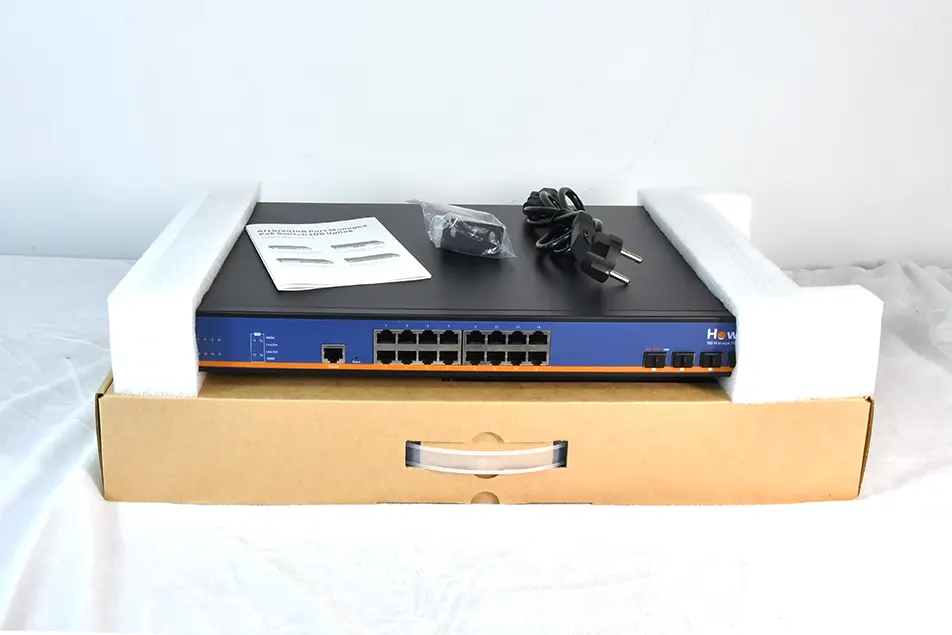
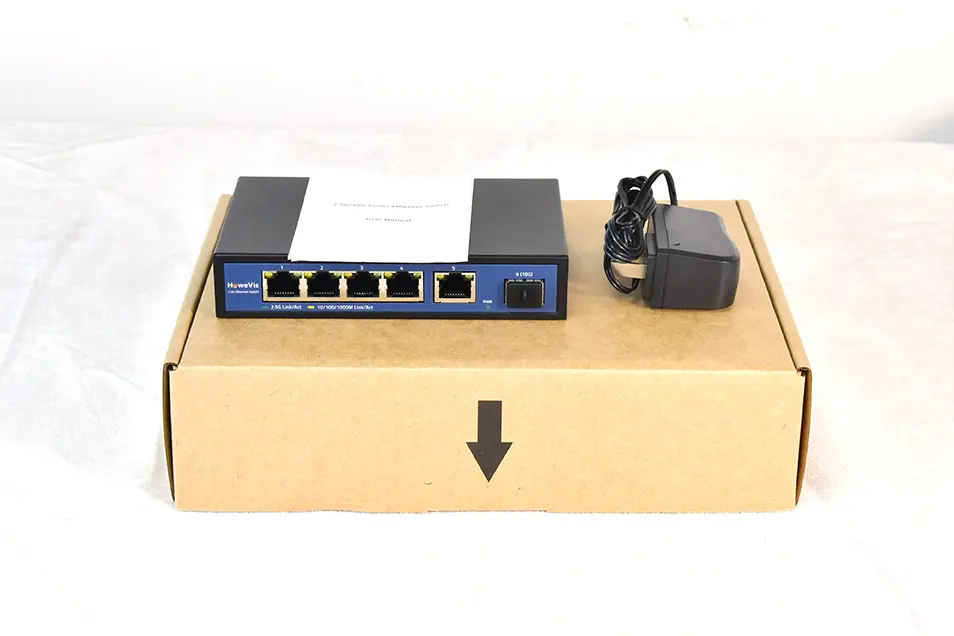
Types of PoE switches:
Do you think which type of PoE switch is best? There are many options like a controlled PoE switch, a smart PoE switch, or an unmanaged PoE switch.
We are here to help you manage the complexities of this decision.
Here at HoweVision, we usually suggest a managed switch. It allows a lot more power and flexibility over the network for the term of the switch’s existence. In a company, things change, and expecting and organizing is half the war.
Let’s discuss its three main types to make it more convenient for you to choose. Your decision becomes easier once you understand the distinct capabilities of each type. The three PoE switch types are: unmanaged, controlled, and web-smart.
The Unmanaged PoE Switch:
You can install this type of switch in home networks, small businesses, offices shops, etc.
The other benefit is that they are simple to use and affordable. These switches offer plug-and-play features.
This switch is neither unchangeable nor controlled. There is no need to enable or disable interfaces. They are ideal for businesses with no IT administrators or junior technologists. They don’t have any security features.
But if you are using them at home or in a small network of less than 5-10 machines, they will please you.
For an organization that manages confidential information, this is not a good option. It would be best if you used something more efficient and secure.
The Smart or Hybrid PoE Switch:
These are ideal for business applications. For example, VoIP (Voice over Internet Protocol (VoIP), making voice calls over the Internet. The Smart or Hybrid PoE Switch is more efficient to use rather than a conventional phone line.
Intelligent switches are like managed switches, but they have fewer features. You can’t access them over the Internet. Setting up and running a business does not need qualified personnel. Their user interface is more straightforward than that of managed switches.
They do, yet, have alternatives. Such as Quality of Service (QoS) and Virtual Local Area Networks (VLANs). For places like laboratories, they’re ideal for VoIP tablets, small VLANs, and workgroups.
Smart switches allow you to configure ports and create virtual networks. However, they lack the flexibility to enable network management, troubleshooting, or remote access.
Such kinds of PoE switches provide no-frills management. They have no security features and are less costly than managed services.
The Managed PoE Switch:
Managed switches provide network protection, power, and management at a high level. They’re suitable for operations that involve 24-hour monitoring. These switches offer you a perfect remote access control from a remote location.
Managed switches are the most expensive ones. But they are well worth the money and pay for themselves over time. These switches’ cloud computing enables networks to extend.
Managed switches can boost the speed and efficiency of a network. Admins manage resources through a text-based command-line interface. It requires specialized knowledge to set up and perform.
Advanced features include:
- Prioritizing user traffic,
- Partitioning a network,
- Responsible for creating connections between different types of networks.
- Tracking traffic as it moves through the device.
Managed switches are for enterprise networks and data centers. An enterprise data center is a private facility that supports a single business. These switches can be on-premises or off. It all depends on connectivity, strength, and security requirements. We prefer these switches because they provide absolute security features and management capabilities.
Sometimes external provider support centers cannot operate. It is because of time zone variations and language barriers. Determine the amount of help you’ll get ahead of time and make arrangements. It will save time and effort while increasing efficiency.
